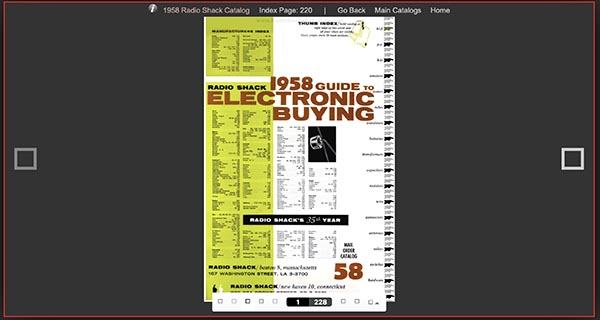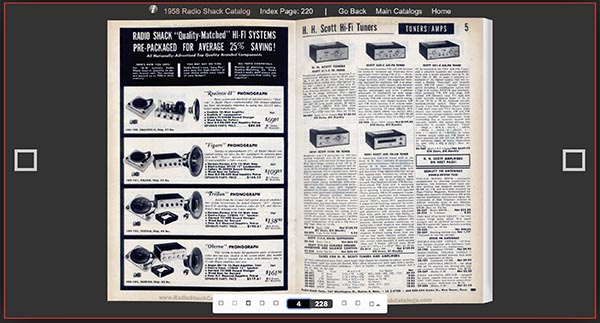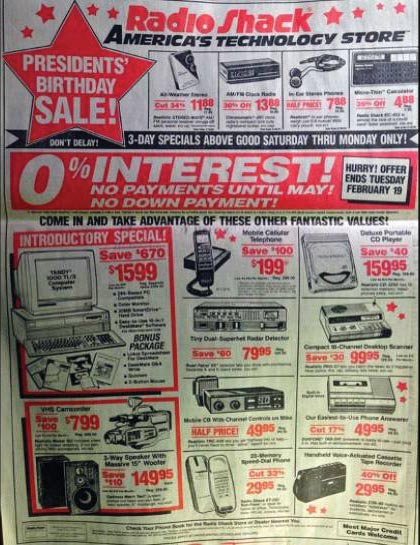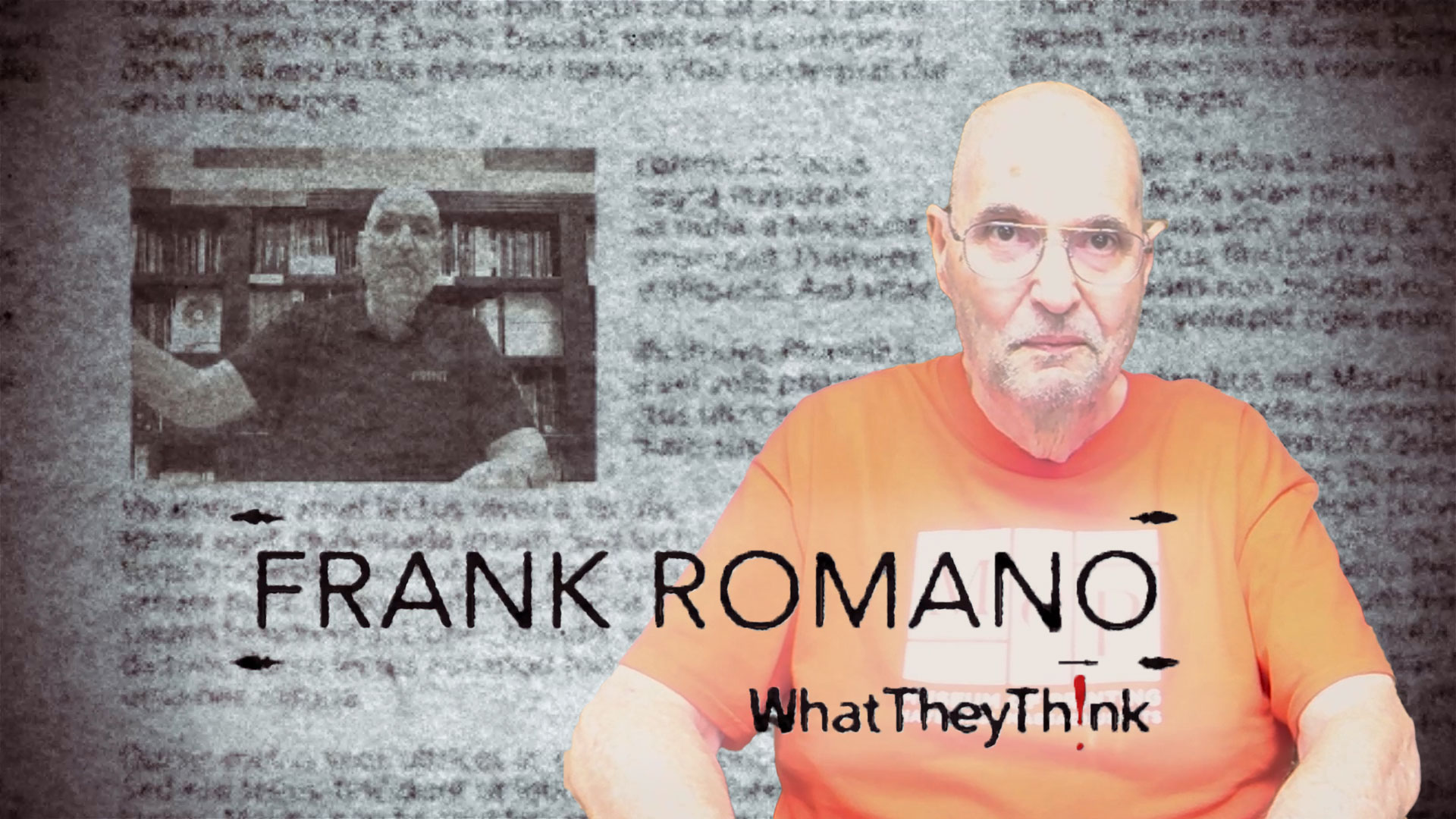
The First Cut Is the Deepest
There is one basic occupational hazard involved in working with paper: paper cuts. No, not reducing one’s use of paper, but the actual physical injury caused by the edge of a sheet of paper slitting one’s flesh. But which paper is the most hazardous? Via Phys.org, a recent article in the journal Physical Review looked at the physics of paper cuts.
To test the cutting ability of different types of paper, the researchers used ballistics gelatin as a stand-in for skin. They then attempted to cut the gelatin using multiple types of paper. They noted the sturdiness and thickness of the paper, and the angles that were involved when cutting occurred.
Interesting that they felt the need to add a link to explain what skin is, but not ballistics gelatin.
The research team found that paper that was the most thin was unlikely to cause a cut because it tended to buckle instead. Also, thick paper rarely led to a cut because its surface was spread over too large an area. That left paper that is neither too thick nor too thin, like the kind that is used in newspapers or dot-matrix printers—the two types tied for the title “Most likely to cut skin.”
Other hazardous paper types included Post-It notes, printed magazines, and office paper. “Some that were less likely to cut include tissue and photo paper.” It’s quite likely that any printer could easily have answered this basic question without needing to actually conduct research. Still, we rather like the term “papermachete.”
The researchers also noted that some papers, such as those used in dot-matrix printers, are exceptionally good at cutting. They proved this to be the case by connecting a small piece of it to a scalpel and using the results as a “papermachete.” They found their little knife was capable of slicing through vegetable skin and even some meats.
The researchers must spend a lot of time in hotels or rental-car counters, as they are the only places we ever really encounter dot-matrix printers these days.
Am I Blue?
Most of us know that color perception is a difficult business (or, you could say, color management is a gray area...). Most of the problem lies in the display of a particular color: is it an electronic screen or a printed item? What is the ambient lighting like? Etc. But compounding the issue is that how each of us perceives a color physiologically can vary. Via Boing Boing, neuroscience and AI researcher Patrick Mineault has launched a site called Is my blue your blue, questionnaire that asks users questions about their color perception. It displays a series of colors, and you tell it if what you see is blue or green.
Color perception is tricky to measure–vision scientists use specialized calibrated equipment to color perception. Graphic designers use physical color cards, such as those made by Pantone, so that they can communicate colors unambiguously. Here we use your monitor or phone to test how you categorize colors, which is far from perfect.
The validity of the inference is limited by the calibration of your monitor, ambient lighting, and filters such as night mode.
And of course one’s vision.
It can be a little tricky (some were decidedly cyan), but this is the result you get:

That could explain the chart color choices in our data analysis articles…
Austen City Limits
Next year, Jane Austen is celebrating her 250th birthday (well, not her personally) so Jane Austen’s House in Chawton, England, has partnered with Pentagram to design a visual identity to brand the occasion. Says Print magazine:
the identity beautifully captures the author’s love of nature, sharp wit, and enduring elegance. The design features a Blush Noisette rose, reminiscent of the one adorning the house’s doorway, alongside an oak leaf and acorn inspired by a Wedgwood dinner service Austen once praised. The ‘Chawton Leaf’ pattern, found in the dining room wallpaper and dating back to Austen’s time, also plays a key role, weaving history into this fresh, visually enchanting identity.

So, mark your calendars, Austenites. Next year promises to be a veritable feast of exhibitions and events, all set against the backdrop of the house where Jane herself revised, wrote, and published her timeless classics—Sense and Sensibility, Pride and Prejudice, and others. Since we can’t find a way to time-travel back to 1811 for a proper Regency ball, visiting Chawton in 2025 is the next best thing. Visit the Jane Austen’s House website for the festival lineup, further news, upcoming events, and exhibitions.
Love Shack
Some of you over a certain age may recall the ubiquitous chain store RadioShack, which operated for 70 years, often against all odds. (A 2007 Onion article was headlined “Even CEO Can’t Figure Out How RadioShack Still In Business.”) It declared bankruptcy a number of times and was finally stripped for parts a few years ago. According to Gizmodo, “Its X account famously shills crypto with eye-catching NSFW posts.” We’ll take their word for it. But the Golden Age of RadioShack lives on via the archiving efforts of RadioShackCatalogs.com:
The heart of this online archive lay in its collection of catalogs, spanning the years 1939 to 2011. For 72 years, RadioShack had meticulously crafted these catalogs, showcasing a diverse range of products that mirrored the evolving landscape of technology. From hi-fidelity stereos to communication equipment, from computers to electronic components, these catalogs are a visual journey through the history of RadioShack.


It’s a pretty cool trip through the history of 20th century technology.
Part of what helped hurt RadioShack is exemplified by this 1991 ad:

(Image courtesy Michael Jahn, via The Third Wave by Dr. Joe Webb and Richard Romano)
Notice that virtually everything has been replaced by a smartphone app. You can carry every item in this ad in your pocket.
Wooden It Be Nice
All the people who love to claim that we should stop using paper because it kills trees should check this out: Milwaukee is building a skyscraper made primarily of wood. And, get this, it’s not the first “timber tower” in the city’s skyline. Says CNN:
The US city of Milwaukee is already home to the world’s tallest timber tower. But another, even taller, wooden skyscraper could be added to its skyline, designed by Vancouver-based studio Michael Green Architects (MGA).
The firm recently released plans for the development, which includes a 55-story tower made principally from mass timber — thick, compressed, multilayered panels of solid wood. If built, it would usurp the current world title holder, the 25-story Ascent tower by Korb + Associates Architects, as well as becoming the tallest building in the state of Wisconsin.
Why wood?
While the use of mass timber is steadily increasing worldwide, thanks to changes in building regulations and shifting attitudes towards the material, it has yet to match the sheer height of buildings made of concrete and steel — although a slew of timber high-rises have been proposed in recent years. MGA says its tower design would be approximately 600 feet (182 meters) tall — more than double the 284 feet (87 meter) tall Ascent tower.
…Currently, the building and construction sector accounts for 37% of global emissions, much of it down to the production and use of materials such as concrete and steel, which are massive carbon emitters. Trees are the opposite, absorbing carbon throughout their lifetime. If those trees are turned into mass timber and used for construction, that carbon is “locked in,” or sequestered for however long the building stands. “By building with it, we’re actually building with a carbon sink,” Green argued.
As with paper, the key is in sustainably managing forests.
To deliver its purported carbon savings, trees must be grown for a significant length of time to sequester carbon and be replanted once they are cut down. Green said that MGA uses wood from responsibly managed forests in North America.
Treating trees as a renewable crop is actually more beneficial for forests in the long run, as the real threat to forests that are unused is to cut them down to build subdivisions or strip malls.
Noble People
There were a couple of notable deaths from the world of publishing this week. The first was Leonard Riggio, founder of Barnes & Noble. Says the NY Times:
Mr. Riggio, a son of a cabdriver, was just 30 in 1971 when he bought a fusty half-century-old bookstore in Lower Manhattan called Barnes & Noble and began turning it into a literary behemoth. Within decades, it was the largest bookseller in the United States, with hundreds of superstores, many of them in places that had formerly been book deserts, like malls.
We’re happy that Barnes & Noble is still around and is having a bit of a renaissance, but not everyone was a fan back in the day:
The company’s strong-arm practices upended the industry. Thousands of independent bookstores went out of business as Barnes & Noble grew. And Mr. Riggio — a dapper Brooklyn-raised liberal and art lover devoted to civil rights and Democratic causes — found himself roundly vilified as the publishing world’s most heinous bad guy and as a neighborhood killer and a philistine.
Think of B&N as the Amazon of its day.
In the world of magazine publishing, we also lost Landon Y. Jones, who helped propel People to the top tier of print magazines. Again from the NY Times:
An unapologetic champion of the newsworthiness of celebrities, Mr. Jones was perpetually eager to learn about the next famous person. As a writer for People, he interviewed a young Bill Gates in 1983 and brought along a colleague, one of the few he knew with a personal computer, to help him understand the Windows operating system.
During his stint as People’s managing editor, the top editorial job, from 1989 to 1997, Diana, Princess of Wales, appeared on the magazine’s cover dozens of times. Mr. Jones would say that People, a publication of Time Inc., was about the “three D’s”: Diana, diet and death, specifically that of celebrities.
This caught the eye:
During Mr. Jones’s tenure, People introduced color printing; moved its newsstand date from Monday to Friday to capture weekend supermarket sales traffic; and made women its primary target audience.
The changes were instigated by People’s publisher at the time, Ann S. Moore, who said in an interview that Mr. Jones had been an enthusiastic partner in redirecting and fattening the corporate cash cow that was People.
Some years ago whilst in a doctor’s waiting room, we decided that the definition of “middle age” is when you no longer know who more than 50% of the celebrities in an issue of People are.
Troy Story
We know from cop shows that criminals get booked, but not like this. Via the BBC:
A would-be burglar in Rome was caught after stopping to read a book on Greek mythology in the middle of a theft, Italian media reports.
The book in question was The Gods at Six O'Clock by Giovanni Nucci, which explains Homer’s Iliad from the perspective of the gods.
The 71-year-old homeowner is said to have awoken and confronted the alleged thief, who was engrossed in the book.
The culprit’s explanation somehow rings false.
After being caught off-guard, the alleged thief reportedly attempted to make a quick getaway by escaping via the same balcony, but was arrested shortly afterwards. He is said to have told police he had climbed the building to visit a person he knew. “I thought I had ended up in a B&B, saw the book and started to read it.”
It didn’t help his case that he was caught with a bag of expensive clothing allegedly stolen from another house. Still, it looks like he’s going to get a book out of it. Said Nucci, author of the book:
“I’d like to find the person caught red-handed and give him the book, because he’ll have been arrested halfway through reading it. I’d like him to be able to finish it.”
Looks like he’ll have time for it.
Fungis
Well, this is an unusual headline. From CNN: “Robot controlled by a king oyster mushroom blends living organisms and machines.”
By growing the mushroom’s mycelium, or rootlike threads, into the robot’s hardware, a team led by Cornell University researchers has engineered two types of robots that sense and respond to the environment by harnessing electrical signals made by the fungus and its sensitivity to light.
The robots are the latest accomplishment of scientists in a field known as biohybrid robotics who seek to combine biological, living materials such as plant and animal cells or insects with synthetic components to make partly living and partly engineered entities.
If they use it to make a robotic vacuum they can call it the Shroomba.
The Graphene Heat Is On
Was it a good week for graphene news? It’s always a good week for graphene news! A graphene radiator capable of heating a room in a few seconds. From (who else?) Graphene-Info:
Xiaomi has released its new Xiaomi Mijia Graphene Skirting Board Heater 2, a graphene radiator that boasts a powerful heating system 2.200W and a foldable format. The Xiaomi Mijia Graphene Skirting Board Heater 2 features a graphene heating technology heater capable of providing heat in just 3 seconds and heating an entire room to the desired temperature in just 15 minutes.

Xiaomi had previously introduced the disturbingly named Mijia Graphene Baseboard Heater (Fire Edition), which used two graphene-based heating elements, and “has a simulated flame function that uses an integrated humidifier and LEDs to generate the flame appearance. This new launch seems to be the next generation in the same product line.”
In addition, the new Xiaomi Mijia Graphene Skirting Board Heater 2 has various cooling mechanisms as well as protection against electrical failures or overheating. This is combined with intelligent temperature control to create a comfortable environment.
Alas:
The new Xiaomi Mijia Graphene Skirting Board Heater 2 is now on sale in China for 799 yuan, about 102 euros. However, for the moment it is unknown if it will officially reach the global market.
Unhalfbricking
One major user of fossil fuels that rarely comes up in sustainability conversations is Lego, which uses oil-based plastics in the literally billions of bricks they sell every year. They have been trying to devise more sustainable and renewable options, having adopted then abandoned one oil-free plastic (they found that bricks made from recycled polyethylene terephthalate would in fact lead to higher carbon emissions). Now, they have seized on another solution. Says Reuters:
Lego, which sells billions of plastic bricks annually, has tested over 600 different materials to develop a new material that would completely replace its oil-based brick by 2030, but with limited success.
Now, Lego is aiming to gradually bring down the oil content in its bricks by paying up to 70% more for certified renewable resin, the raw plastic used to manufacture the bricks, in an attempt to encourage manufacturers to boost production.
… He said the company is on track to ensure that more than half of the resin it needs in 2026 is certified according to the mass balance method, an auditable way to trace sustainable materials through the supply chain, up from 30% in the first half of 2024.
This will make bricks costlier to produce, but Lego says it will not pass on the cost to the customer. Here’s a quote you never see from a company executive:
“With a family-owner committed to sustainability, it’s a privilege that we can pay extra for the raw materials without having to charge customers extra,” [Lego CEO Niels] Christiansen said.
Now, if they could source a plastic that is less painful when you step on a Lego brick, they’d have something.
A Sprinkle a Day
Via Core 77, Miami’s Douglas Hoekzema (aka Hoxxoh) is an architect turned mural artist who works in a unique medium: hacked lawn sprinklers, which he had adapted to spray paint.

His finished works are pretty cool.

However, you probably won’t want to run through his sprinkler on a summer day.
Pretty in Pink
It’s not just Jane Austen who has a divisible-by-five birthday coming up, but Barbie as well, although she is “only” 65. And to help commemorate, Krispy Kreme is launching a line of doughnuts. From (who else?) Food & Wine:
“We’re excited to celebrate the Barbie brand’s 65th?birthday with a collaboration that’s full of fun and flavor,” Dave Skena, the global chief brand officer for Krispy Kreme, shared in the announcement. “We’re bringing Barbie’s iconic fashions to life through delicious doughnuts that are sure to thrill Barbie and Krispy Kreme fans alike.”

Shall we list the four flavors? Oh, sure, why not.
- The Barbie Pink Doughnut—“made with an Original Glazed base and piped with pink buttercream before being topped with sparkly pink sugar and a pair of edible Barbie sunglasses”
- Malibu Dream Party Doughnut—based on the Malibu DreamHouse and “filled with Cake Batter Kreme, dipped in Malibu blue icing and sparkly graham sand, and topped with a Barbie DreamHouse piece”
- Barbie Berries ’n Kreme Doughnut—“filled with Strawberry Kreme, dipped in white icing, drizzled with purple and pink buttercream, and topped with a Barbie heart” (that last bit sounds a bit too Edgar Allan Poe—“here, here!–it is the beating of her hideous heart!”)
- Barbie Sweet 65th Doughnut— “This Original Glazed Doughnut keeps things relatively simple. It's dipped in chocolate icing and topped with Barbie Sweet 65th sprinkles”
Fans can get the doughnuts as individual treats or in a Krispy Kreme six-pack. But hurry. Barbie is going to turn 66 soon, and there likely won't be any special doughnuts for that.
Just insulin shots.
This Week in Printing, Publishing, and Media History
September 2
1752: Great Britain, along with its overseas possessions, adopts the Gregorian calendar.
1963: The CBS Evening News becomes U.S. network television's first half-hour weeknight news broadcast, when the show is lengthened from 15 to 30 minutes.
1973: English novelist, short story writer, poet, and philologist J. R. R. Tolkien dies (b. 1892).
2013: American author and publisher Frederik Pohl dies (b. 1919).
September 3
1802: William Wordsworth composes the sonnet “Composed upon Westminster Bridge, September 3, 1802.”
1883: Russian author and playwright Ivan Turgenev dies (b. 1818).
1962: American poet and playwright e. e. cummings dies (b. 1894).
1967: Dagen H in Sweden: Traffic changes from driving on the left to driving on the right overnight.
September 4
1888: George Eastman registers the trademark “Kodak” and receives a patent for his camera that uses roll film.
1908: American novelist, short story writer, essayist, and poet Richard Wright born.
1951: The first live transcontinental television broadcast takes place in San Francisco, from the Japanese Peace Treaty Conference.
1972: The Price Is Right premieres on CBS. As of 2024, it is the longest running game show on American television.
1998: Google is founded by Larry Page and Sergey Brin, two students at Stanford University.
September 5
1977: NASA launches the Voyager 1 spacecraft. Voyager 1 (like the other voyager probes) contained what was called the “Golden Record,” a gold-plated audio-visual disc that contains photos of the Earth and its lifeforms, scientific information, spoken greetings from people such as the Secretary-General of the United Nations and the President of the United States, a medley of "Sounds of Earth" (the sounds of whales, a baby crying, and waves breaking on a shore, in case aliens are into New Age music), and a collection of musical works by Mozart, Blind Willie Johnson, Chuck Berry, and Valya Balkanska. In 2013, Voyager 1 became the first manmade object to leave the Solar System.
1929: American comedian and actor Bob Newhart born, who did more for the telephone than Alexander Graham Bell.
1945 (not the Year of the Cat): Scottish singer-songwriter and guitarist Al Stewart born.
1946: Tanzanian-English singer-songwriter and producer Freddie Mercury born.
September 6
1642: England's Parliament bans public stage-plays.
1928: American novelist and philosopher Robert M. Pirsig (Zen and the Art of Motorcycle Maintenance) born.
1943: English singer-songwriter and bass player Roger Waters born.
September 7
1559: English-French printer and scholar Robert Estienne dies (b. 1503).
1911: French poet Guillaume Apollinaire is arrested and put in jail on suspicion of stealing the Mona Lisafrom the Louvre museum.
1912: American engineer and businessman and co-founder of Hewlett-Packard David Packard born.
1927: The first fully electronic television system is achieved by Philo Farnsworth.
1978: English drummer (The Who) Keith Moon dies (b. 1946).
2003: American singer-songwriter Warren Zevon dies (b. 1947). Life’ll Kill Ya.
September 8
1504: Michelangelo’s David is unveiled in Piazza della Signoria in Florence.
1930: 3M begins marketing Scotch transparent tape. The idea seemed to stick.
1966: Star Trek premieres.
1971: In Washington, D.C., the John F. Kennedy Center for the Performing Arts is inaugurated, with the opening feature being the premiere of Leonard Bernstein’s Mass.















Discussion
Only verified members can comment.